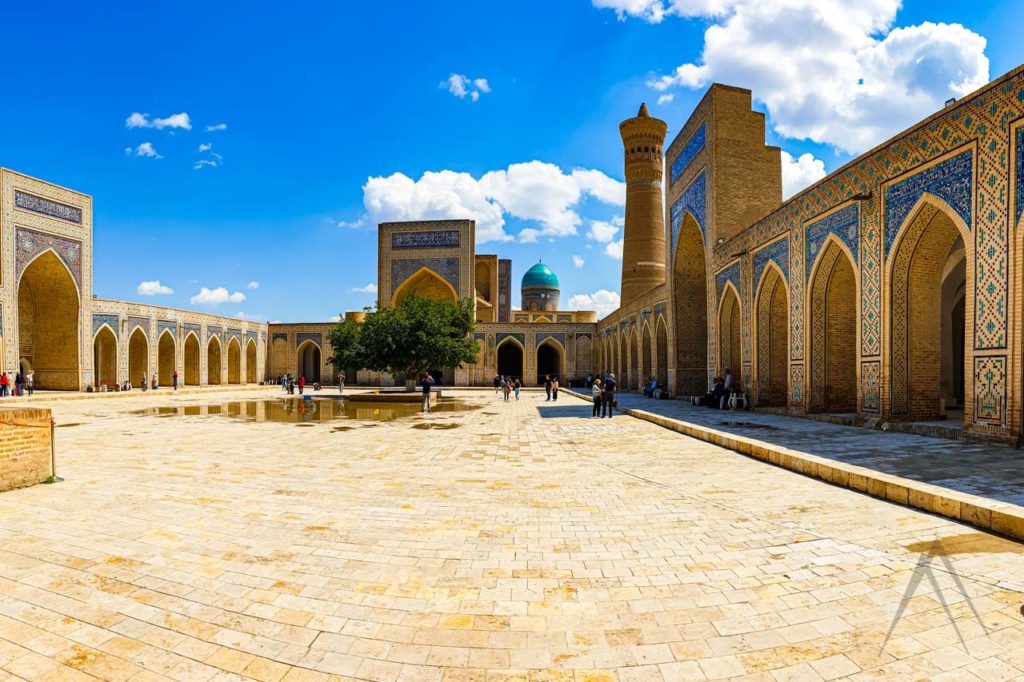PO I KALYAN
PO I KALYAN COMPLEX
Po i Kalyan (Poi Kalyan) complex is a triad including the Kalyan minaret, Kalyan mosque and Miri Arab madrasa. The name of the complex in Russian means “the foot of the great” or “the foot of the minaret”. Poi-Kalyan complex as a whole dates back to the 16-18th centuries (some parts are older) and is considered the central architectural ensemble of Bukhara and the most recognizable sight of the old city.
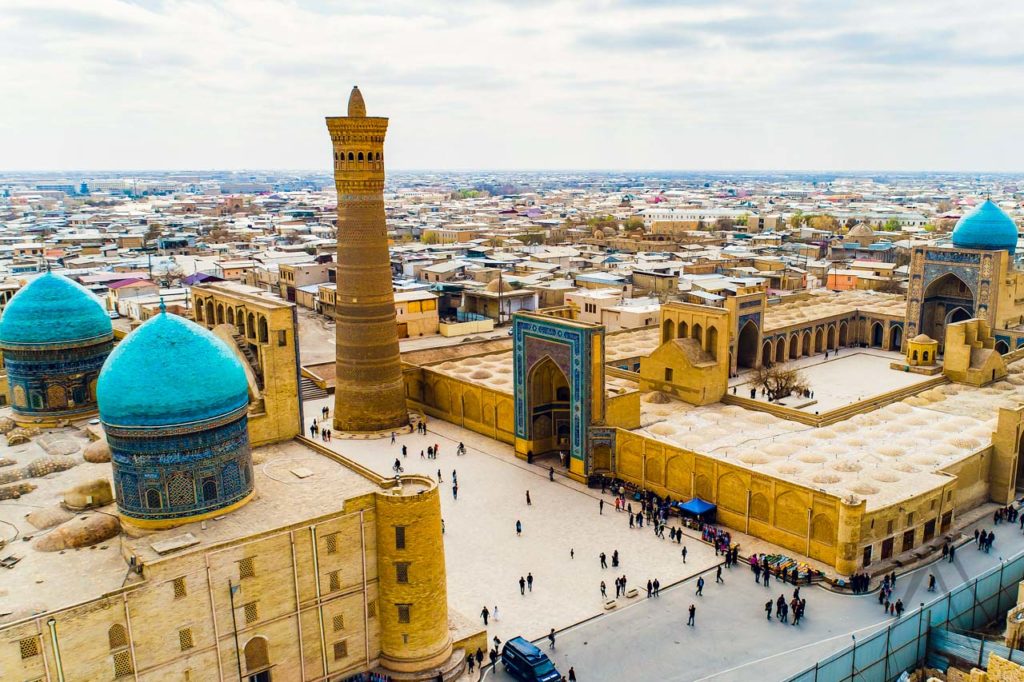
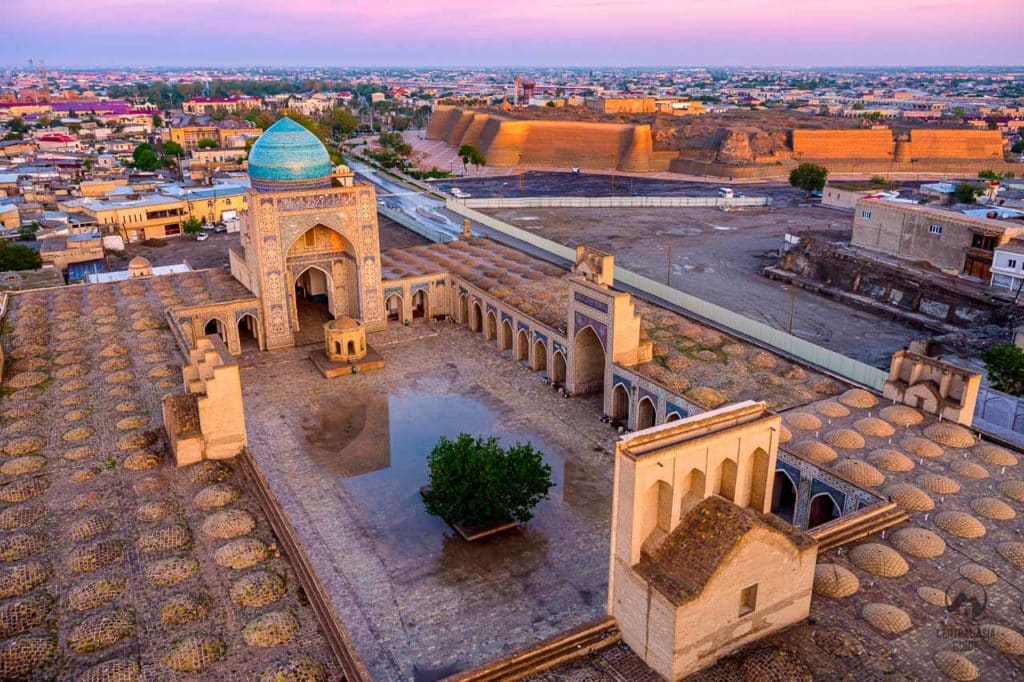
Kalyan Minaret
Great Kalyan Minaret is a representative symbol of Bukhara. In the times past the minaret was a symbol of the authority and power of the spiritual leaders as well as used to call Muslims to prayer. It was built in 1127 and according to the inscription on the cornice, designed by an architect named Bako. Mounting over the city at over 48 meters in height, it has dominated the Bukharan skyline for over eight and a half centuries and been the first sign of arrival to Bukhara for the exhausted caravans. It is still the highest of all the minarets in Bukhara.
Minaret describes a large vertical pillar that is constructed from bricks with 10 m deep foundations, including reeds stacked underneath in an early form of earthquake-proofing that surely have contributed for old age of the tower. It is a brick made tower tapering upward with a base diameter of 9 meters narrowing down top 6 meters at the top. There is a legend that Genghis Khan once looked at this tower and his helmet fell from his head. The great warrior had to bend down to pick it up and continued: “I have never bowed to anyone, but this building is so grand that it deserves a bow.” Therefore it is one of the few Bukharan buildings that survived the Mongol assault.
Throughout the whole length of the minaret, there are 12 decorative belts with an unique ornament with each of them. It is possible to ascend the minaret from the roof of the cathedral mosque through a passage but in our experience it is not always open for access. Inside the tower there is a spiral staircase with 104 steps and a great view over Bukhara old town.
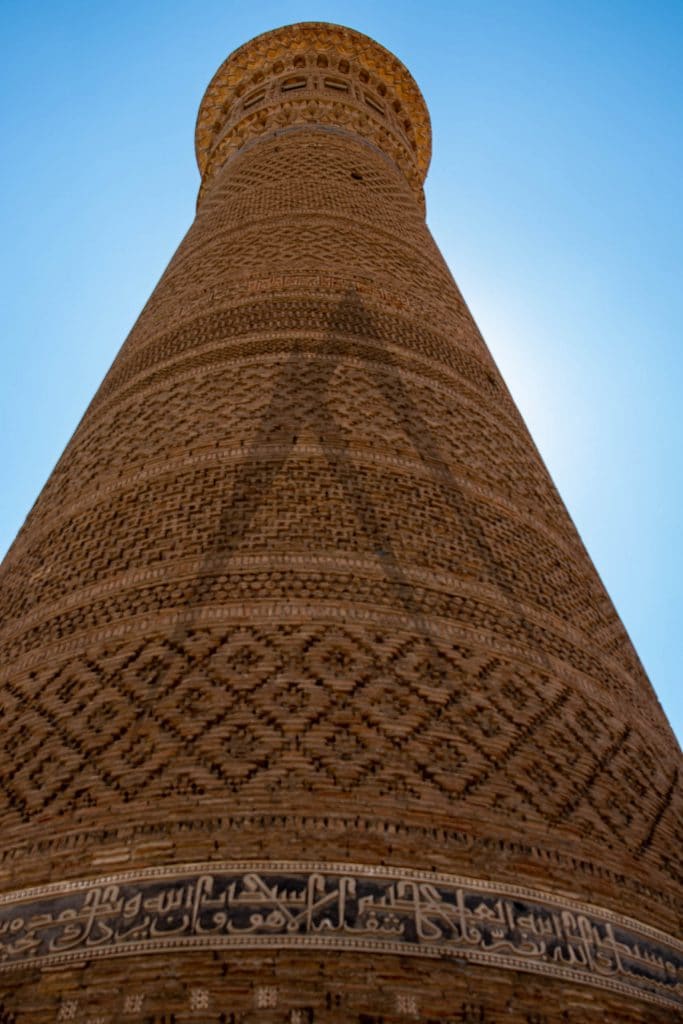
Kalyan Mosque
Kalyan Mosque (or Kalan) is one of the central religious attractions of the Bukhara. The mosque building is vast and can accommodate 12 thousand people inside it. Kalyan Mosque was built at the beginning of the 16th century by the first Shaybanids. Since that time, except for Soviet time, it has operated as the cathedral mosque of Bukhara.
The mosque replaced an old Qarakhanid cathedral mosque from 12th century, which was built together with the Kalyan Minaret. This Shaybanid mosque resembles the same aged Temuric cathedral mosques in Samarkand and Herat. The structure was erected during the reign of Ubaydulla Khan in a traditional rectangular plan with decorations in the form of glazed mosaics. The main entrance has blue on both sides of it. In the courtyard, there are covered galleries with 288 domes. The small octahedral structure at the inner portal is the pulpit.
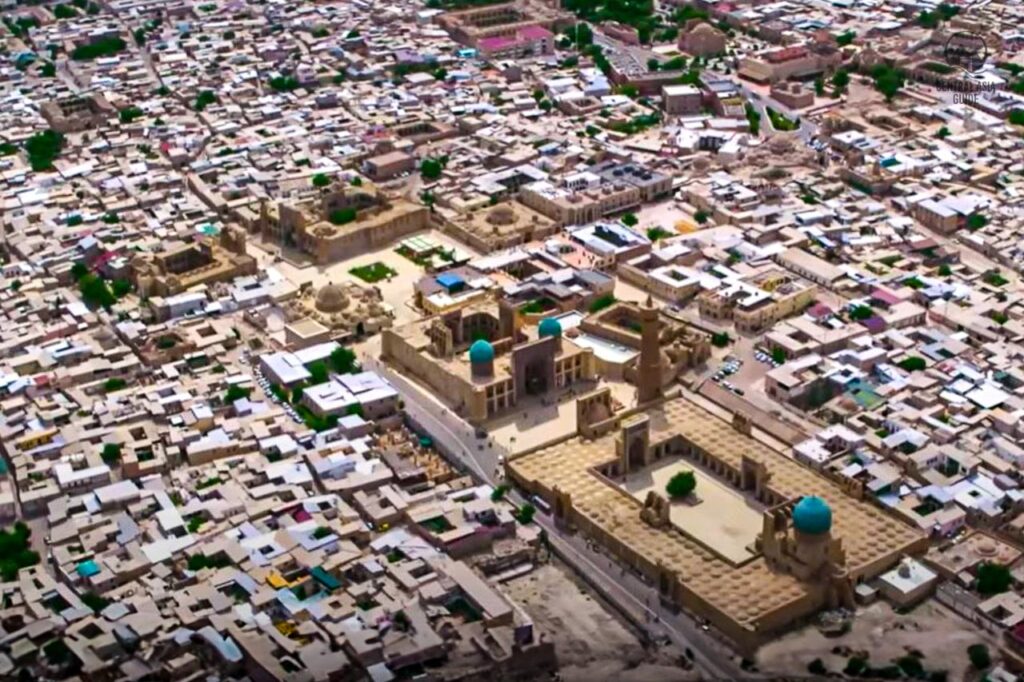

Mir-i-Arab Madrasa
Miri-Arab Madrassah is situated opposite to the Kaiyan Mosque. This madrassah is one of the most famous spiritual Islamic institutions in the post-Soviet region. Miri-Arab name is translated into Russian as “Emir of Arabic” and it was constructed at the Shaybanids era in the 16th century by Ubaydulla Khan for the sheik, the spiritual mentor of the Sheibanid dynasty, the leader of the Muslims of Bukhara – Miri Arab of Yemen (Abdullah Yamani).
There are about 114 classrooms in three corners of the 2 floored building with the fourth holding the necropolis of Ubaidallah-khan and Miri-Arab. The khan’s grave with a wooden gravestone in the Yemen form is placed at the foot of Sheikh Miri-Arab’s tomb. The portal in the middle of the facade has a semi-octahedral arch. The outside decor is made by carved mosaics of vegetative ornaments and Sulth scripts. The decor uses carved Kashin mosaics, floral ornaments and intricate ligature. According to the widespread version, to raise funds for the construction of a madrasah, the khan sold three thousand captured Persians.
For a long time, the educational institution was considered one of the best in Central Asia, many notable scientists and thinkers were taught here. Interestingly, even in the Soviet Union, this madrasah continued to function as a religious school. Restoration work of the Mir-i-Arab madrasa was carried out in 20th century and education within its walls was again resumed. Today Miri Arab Madrasah is still operating for its original intended purpose.
